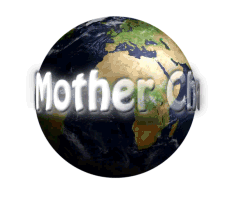So for example, if everything is uprooted and pulled out, you’ve then got debt, organic debt, created, if you have a situation, and I mentioned it with that rather nasty process with, say, canola where everything is removed, and herbicides, if everything is removed, you create an inorganic dead. So that would contrast with for example, say a fruit tree, where only the fruit is removed, and you’ve got the residual of leaves, and so forth, that the bulk of the plant actually remains. So if you’d like the proportions are quite different. Again, there would be variations on types of drugs. So you would have a whole variety of things that are picking, for example, a picking lettuce where you would, over a long period of time, select one or two leaves of a plant, and then come back and do it at a later stage. So again, there will be another example would be something like kale, where you take off a few leaves, but you’re leaving the plant as the old behind to continue with a sustained production. As I say, with some, you might, tomato would be another story, where there’s I’ve noticed a huge variation, the tendency with modern processes is you would get your tomatoes off, and then remove everything else off at the end of the season. So again, you then you’ve got to be very careful on the kind of depletion of organic matter from that side. Sometimes there are a lot of arguments about removing, particularly with hygiene and disease, but I think it’s over it’s overplayed is it’s going to be much healthier to try and retain as much organic matter as you can. I must admit, I’m begun to think that the terroir, as you put it, or the circumstances may have greater bearing than we have previously thought. In the example that I’ve given, I’m not 100% sure that it is, if you like the germ theory that’s operating, there could also be environmental factors. Because of that, what you’ve just mentioned is you have sometimes an instance of plants next to each other, where one is affected and the other is not exact, I think it’s actually a, this is an area of investigation. I have this uncomfortable feeling that we need to revise particularly our whole notion of viruses in particular. You know, I think where for example, the germ theory does hold is on other other larger forms of parasite. So immediately with bacteria, for example, one begins to realise that there must be a source of bacteria for infestation to take place. So bacterial diseases, again, become different fungal diseases I’ve noticed is, it’s that is usually an indicator of some kind of imbalance. And that a plant a healthy plant has resistance often to pathogenic fungi. Not always, but generally speaking. And so I think there is a challenge here to reevaluate our understanding of what’s going on when we diagnose a viral complaint. And I think it doesn’t only apply to plants, it applies to animals as well. From a theoretical point of view, I think there’s an interesting theory that maybe needs more rigorous exploration is that a virus is the result, if you like the internal breaking up of DNA within the cell, resulting from certain stress factors. So the virus actually has its origins internally. And I think that’s something that maybe needs to be investigated more carefully.
 Mother Channel Environmental, climate change news and media.
Mother Channel Environmental, climate change news and media.



